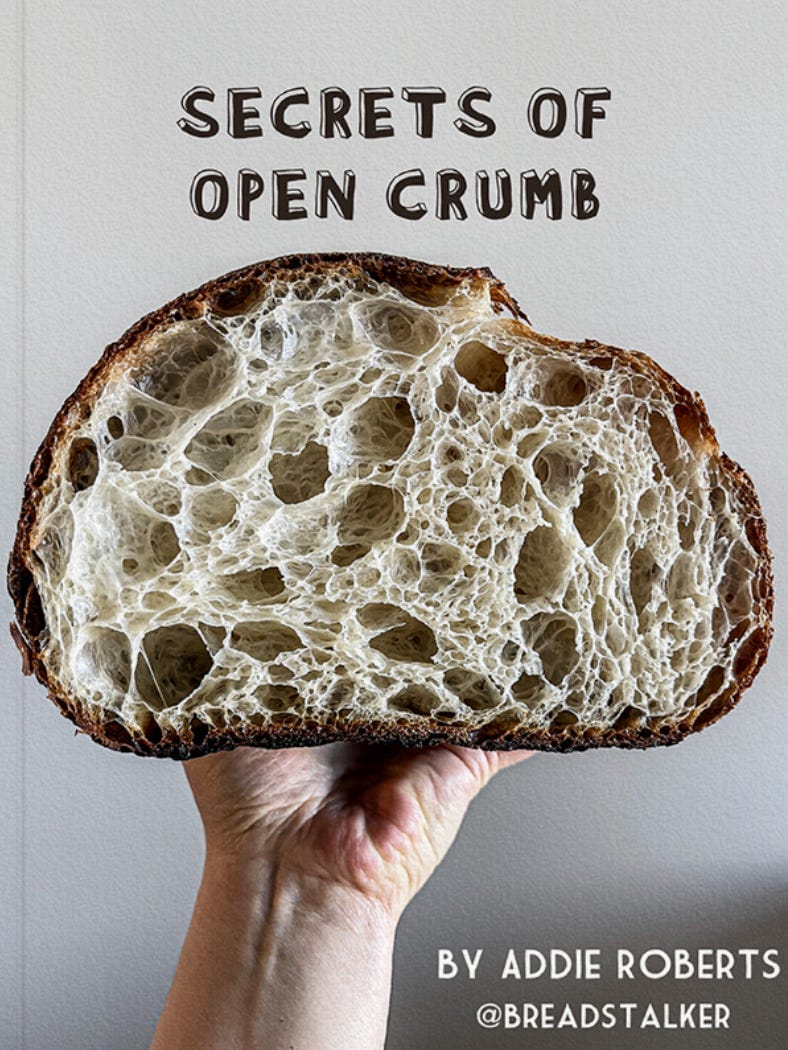Recipe: With-a-touch-of-soft-wheat sourdough

I call this loaf all-inclusive because it has long overnight autolyse, mature levain, long bulk fermentation, and long proof. I added a small amount of soft wheat flour to give more spider-web softness and delicacy to the crumb. It also has to be a strong soft wheat that can handle long autolyse and long fermentation well. And, Petra 1 flour is just that.
At night, I mixed my levain with 18g active starter, 126g flour, 126g water (1:7:7) and kept it at 75ºF (with this amount of levain, I baked a few loaves that day). 1–2h after I fed it, I gave it a stir (mini stretch and folds). I also mixed the flours and water for overnight autolyse and kept it on my kitchen counter at 67–68ºF.
I woke up to a bubbly good morning from my levain and fully developed gluten in my dough. It was so, so smooth and beautifully extensible that it felt like heavy velvety curtains. The length of the autolyse was 12 hours.
I added my mature levain, also 12 hours old, to the dough, and mixed it gently to incorporate it well. Maybe just a minute or two, since there’s no need to mix to develop gluten; the overnight autolyse has done that for you.
Thirty minutes later, I added the salt by incorporating it gently. I did one lamination 30 minutes after adding the salt.
[Here’s a short video of Addie doing a dough lamination:]
Then, I performed five coil folds. The first four were separated by 45 minutes and the last one followed after 60 minutes. As I said, the dough was very extensible after the 12–hour autolyse (and also because of that soft wheat).
262.5g bread flour (12.5% protein Bob’s Red Mill Artisan Bread Flour)
87.5g soft wheat (Petra 1 flour)
259g water (74% hydration)
70g levain
7g salt
Total bulk fermentation was 11.5 hours, counting from the moment I added the starter. Up until lamination, the dough was kept at 72°F (22C) and after that I placed it in the proofer at 74-75°F (23-24C). Dough temperature was maintained at 74-76°F (23-25C)
Petra 1 soft wheat flour takes much longer to ferment, and it can handle it very well. It's also used in the production of Panettone, and as you may know, Panettone requires different stages of long fermentation. So, I'd recommend that you learn your flours very well and let them tell you what they need.
After bulk fermentation, I shaped the loaf and put it in the fridge for 15 hours at 38°F.
I baked this loaf in a pre-heated cast iron vessel. The first 20 minutes with the lid on at 500ºF (260°C) and an additional 20 minutes without the lid at 430ºF (220°C). Very often, I bake a little longer for a darker and more caramelized crust. Also, I leave the loaf inside the oven after baking with the oven turned off or at the lowest temperature of 170°F (77°C) for 35-40 minutes if I want a thicker crust. A thicker crust will support a well-fermented crumb, and the bread won't collapse while cooling off.

You can see what the long autolyse and long bulk fermentation did with the crumb - knitted it to perfection. Very lacy and even. If you want this kind of crumb, a longer fermentation time is needed. Of course, everything else has to be done right. But the weakened gluten from the long autolyse and then putting that gluten through a very long fermentation, broke it down to a point where it created this delicate lacy crumb while still being strong to lift the dough and express itself in the oven. A good dough structure was also important in this case. Make sure you build it strong.

Excerpted from Secrets of Open Crumb. Copyright © 2022 by Adelina Roberts. Used with permission. All rights reserved.





Member discussion